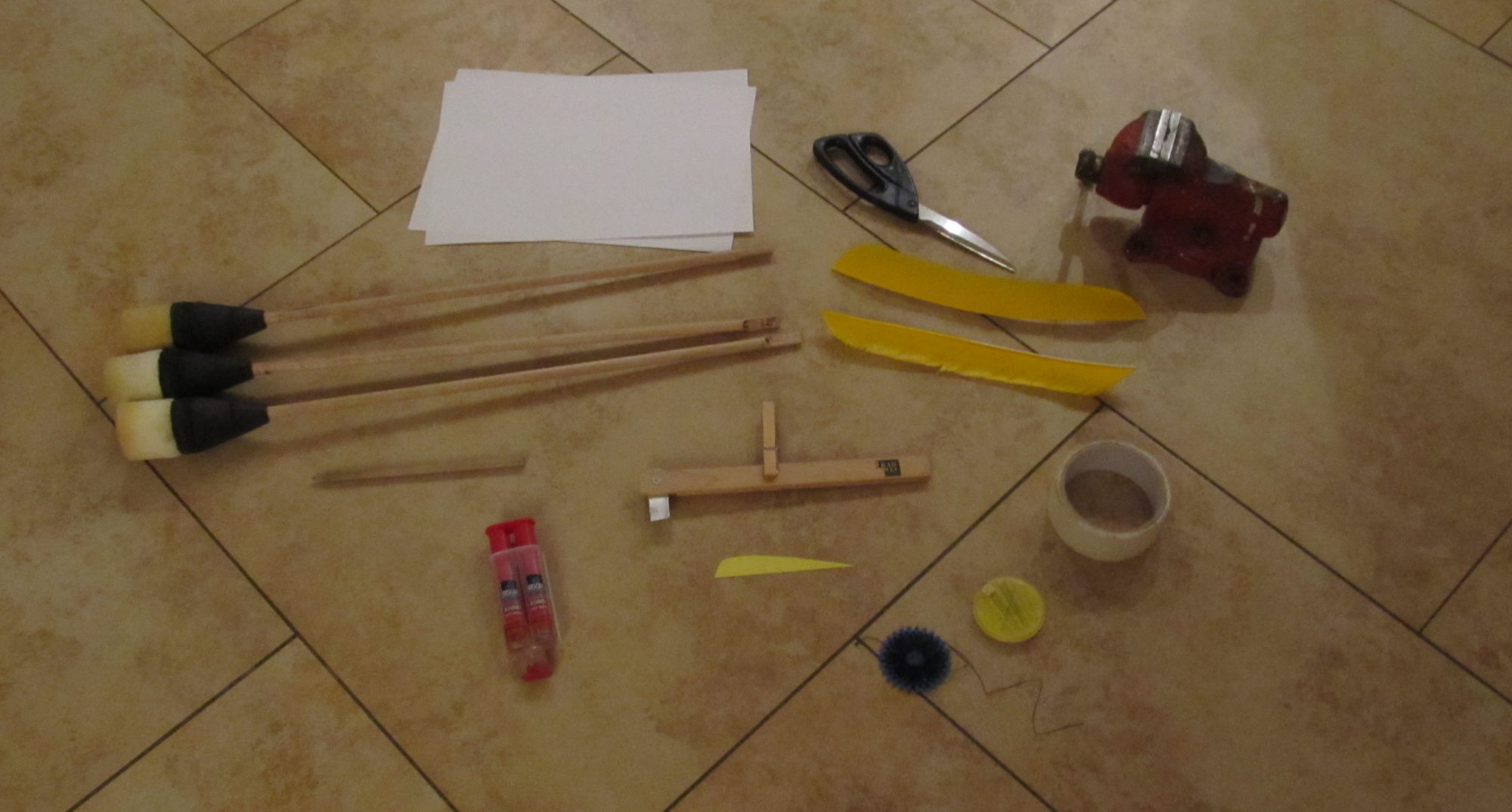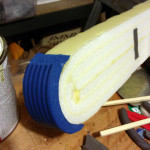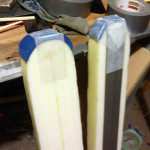Building a durable stab tip was once a mystifying process. The standard material was open celled foam, commonly called couch foam. To allow for the foam’s large compression, a tall stack of foam had to be used. The “taller” a stab tip is, the more likely it will fold over and come free from the blade. This, coupled with open cell foam’s tendency to tear, meant that stab tips couldn’t stand up to heavy use.
With new materials, thinner foam can be used while still being safe. This allows for stab tips that are safe, durable, and attractive.
This guide will instruct you on making a flat blade stab tip, suitable for one handed boffer weapons. If you want extra cushion or are using a two handed weapon, you can double layer the foam by repeating steps 1-4 before proceeding to step 5. This can make for a less durable tip, so be aware.
Materials
- Yoga Mat foam. Not the 2mm thin sheets, nor the thick and firm exercise mats. What you’re looking for is about 10mm thick (3/8″ – 1/2″) and compresses very well. It isn’t as springy as foam used to construct blades, but has more resistance than open cell foam. A good example can be found at WalMart. This is sometimes called “Marine Foam” and is sometimes used as kneeling pads or portable cushions. You can use thicker foam sheets than this guide describes, just be aware of what you’re getting.
- Double sided carpet tape, or DAP contact cement. I find the tape easier for this application because there’s no drying times, but DAP is perfectly acceptable.
- Strapping Tape with fiberglass reinforcing threads.
Process
- Cut a strip of the foam to the width of your blade. You’ll need it to be about 4″ long, but cut to 6″ for safety if this is your first time. If the foam has ridges, cut along the ridges, as they’re a handy guide for keeping the cut straight.
- Test fit the foam to your blade. The width should match the blade. Too thin and the foam will fold over easily. Too thick and you’ll have a bulbous stab tip. Now is the time to trim the length of the foam strip. It should completely cover the top arc of your blade, and the corners of the foam will poke out past the parallel lines of the blade.
- Bevel-trim the ends of your strip so they match the lines of your blade. It can be easier to do this after step 4. I find that 45 degree cuts are suitable, but experiment to find what you think looks best.
- Attach your adhesive! For DAP, make sure to coat both the blade and the foam strip, and wait for it to get tacky. Very carefully, attach the foam strip to your blade. It should be even on both sides and squarely attached.
- Once things dry, you’re going to need to add a layer of reinforcing tape over the top. Use strapping tape to cross over middle of the stab tip once, and attach on either side of the blade. Try to avoid compressing the foam during this step, as this will create a firmer stab tip.
- Continue your reinforcing tape on the side of the stab tip now. Avoid double laying the tape, but do not leave gaps between strips of tape. That would create shearing forces within the foam, quickly tearing it down to the blade. Similarly, don’t attach the strapping tape to the blade foam, as this would also create shears between the tip and the blade. You’ll probably want to cut the strip of tape in half for this step. Make sure the ends of the tape cross over each other on either side of the blade for extra security.
- Test the tip to make sure you haven’t compressed it too much with the tape. Don’t hesitate to remove the tip and start over if it’s too firm, as it’ll never be easier to replace than it is now.
Stab tips built in this method tend to wear out from compression before they come off the blade, so it’s important you check your weapons for signs of this. Removing one from the blade can be tricky. If you need to replace it, work slowly and carefully in removing the tape and glue. You don’t want to tear chunks out of the blade foam, as that can be difficult to repair.


